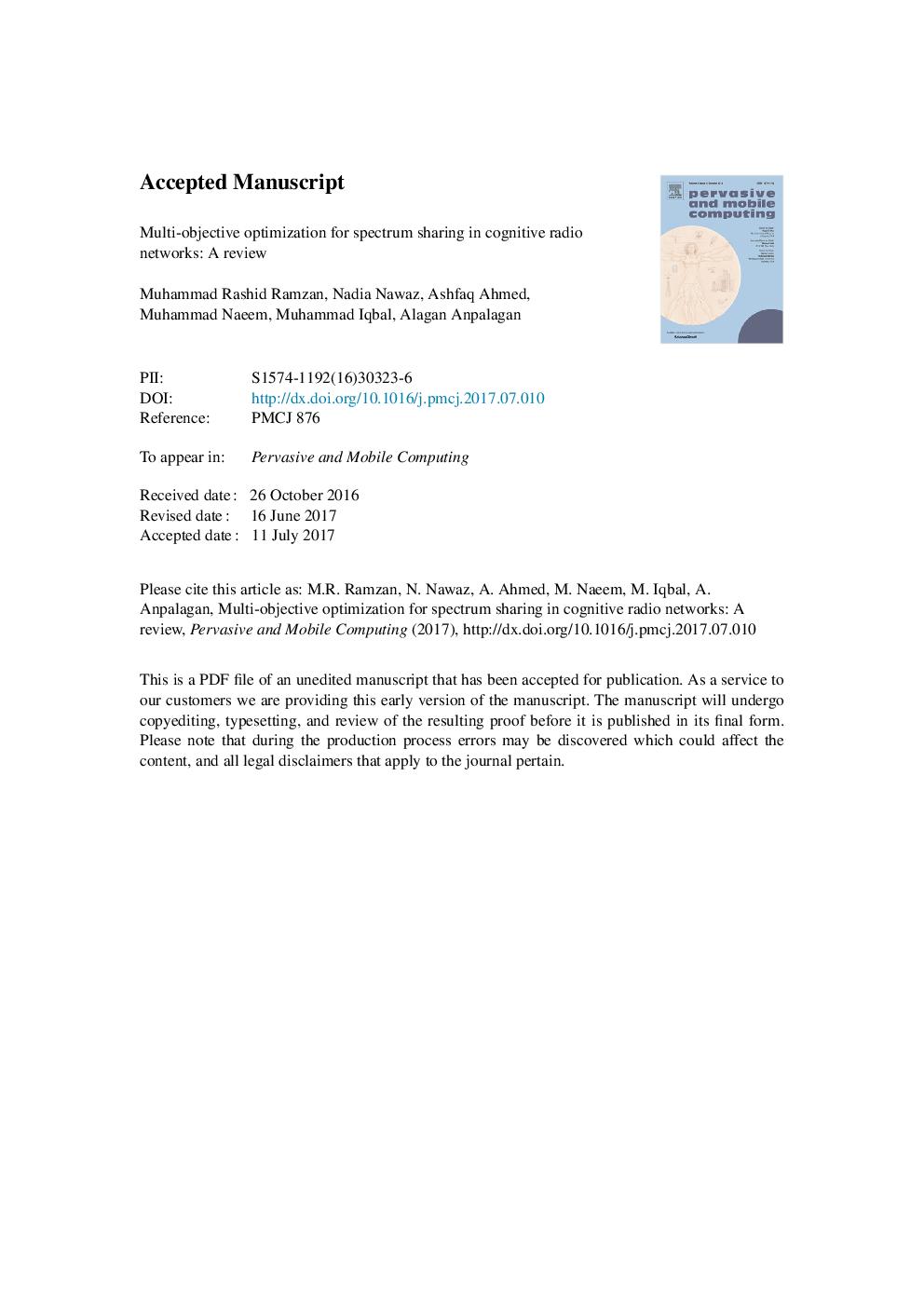| Article ID | Journal | Published Year | Pages | File Type |
|---|---|---|---|---|
| 4957357 | Pervasive and Mobile Computing | 2017 | 23 Pages |
Abstract
Due to advancements in the wireless networking technologies, a lot of new wireless services are demanding the radio spectrum for their usage. The radio spectrum is considered as a limited natural resource for radio communications, and it became crowded. In fact, this resource is not limited, rather the scarcity of the radio spectrum arises because of inefficient and fixed utilization of this valuable resource. This inefficient and under-utilization of radio spectrum has diverted the attentions of the researchers towards the different techniques in order to access the spectrum dynamically and adaptively. The concept of Cognitive Radio (CR) can be implemented by making the communication devices intelligent, in order to use the available radio spectrum efficiently. The efficient implementation of cognitive radios into the wireless networks gives rise to a tremendous number of optimization problems with multiple objectives. In most of the cases, these objectives are conflicting with each other and need to be addressed carefully. In this article, we will present the importance of multi-objective optimization (MOO) in cognitive radio networks (CRNs). We will discuss about the fundamental differences in single objective optimization (SOO) and MOO techniques, in order to solve MOO problems associated with CRNs. We will differentiate between the possible relations such as, conflicting, supporting and design dependent, among these objectives. A comparative discussion will also be provided about optimization types, solution approaches/algorithms and different combining techniques to combine multiple objectives in order to address MOO problems those comes with CRNs.
Keywords
Related Topics
Physical Sciences and Engineering
Computer Science
Computer Networks and Communications
Authors
Muhammad Rashid Ramzan, Nadia Nawaz, Ashfaq Ahmed, Muhammad Naeem, Muhammad Iqbal, Alagan Anpalagan,
